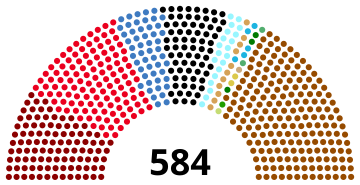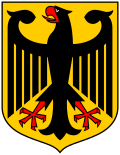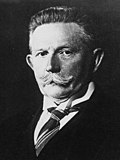 |
|---|
| Party | Votes | % | +/– | Seats | +/– |
|---|
| Nazi Party | 11,737,021 | 33.09 | −4.18 | 196 | −34 |
| Social Democratic Party | 7,247,901 | 20.43 | −1.15 | 121 | −12 |
| Communist Party of Germany | 5,980,239 | 16.86 | +2.54 | 100 | +11 |
| Centre Party | 4,230,545 | 11.93 | −0.51 | 70 | −5 |
| German National People's Party | 2,959,053 | 8.34 | +2.43 | 51 | +14 |
| Bavarian People's Party | 1,094,597 | 3.09 | −0.14 | 20 | −2 |
| German People's Party | 660,889 | 1.86 | +0.68 | 11 | +4 |
| Christian Social People's Service | 403,666 | 1.14 | +0.15 | 5 | +2 |
| German State Party | 336,447 | 0.95 | −0.06 | 2 | −2 |
| German Farmers' Party | 149,026 | 0.42 | +0.05 | 3 | +1 |
| Reich Party of the German Middle Class | 110,309 | 0.31 | −0.09 | 1 | −1 |
| Agricultural League | 105,220 | 0.30 | +0.04 | 2 | 0 |
| German-Hanoverian Party | 63,966 | 0.18 | +0.05 | 1 | +1 |
| Radical Middle Class | 60,246 | 0.17 | +0.15 | 0 | 0 |
| Thuringian Agricultural League | 60,062 | 0.17 | New | 1 | New |
| Christian-National Peasants' and Farmers' Party | 46,382 | 0.13 | −0.12 | 0 | −1 |
| Reich Party for Civil Rights and Deflation | 46,202 | 0.13 | +0.02 | 0 | −1 |
| Socialist Workers' Party of Germany | 45,201 | 0.13 | −0.07 | 0 | 0 |
| Poland List | 32,988 | 0.09 | 0.00 | 0 | 0 |
| For Hindenburg and Papen | 27,752 | 0.08 | New | 0 | New |
| Kleinrentner, Inflationsgeschädigte und Vorkriegsgeldbesitzer | 15,727 | 0.04 | 0.00 | 0 | 0 |
| Free Economy Party of Germany | 11,002 | 0.03 | 0.00 | 0 | 0 |
| Schicksalsgemeinschaft deutscher Erwerbslosen, Kleinhandel und Gewerbe | 9,250 | 0.03 | New | 0 | New |
| Social Republican Party of Germany | 8,395 | 0.02 | New | 0 | New |
| Handwerker, Handels- und Gewerbetreibende | 5,189 | 0.01 | 0.00 | 0 | 0 |
| Radical Democratic Party | 3,789 | 0.01 | New | 0 | New |
| Workers' and Farmers' Struggle Community | 3,308 | 0.01 | 0.00 | 0 | 0 |
| National Social Party of the Middle Class | 3,052 | 0.01 | New | 0 | New |
| Enteigneter Mittelstand | 2,737 | 0.01 | 0.00 | 0 | 0 |
| National Freedom Party of Germany | 1,810 | 0.01 | +0.01 | 0 | 0 |
| Schleswig Home | 1,694 | 0.00 | 0.00 | 0 | 0 |
| Greater German People's Party (Schmalix List) | 1,311 | 0.00 | 0.00 | 0 | 0 |
| Interessengemeinschaft der Kleinrentner und Inflationsgeschädigten | 1,086 | 0.00 | –0.01 | 0 | 0 |
| Nationalist Party | 588 | 0.00 | New | 0 | New |
| People's Socialists | 518 | 0.00 | New | 0 | New |
| Haus- und Landwirtepartei | 461 | 0.00 | New | 0 | New |
| National Communist Party of Germany | 381 | 0.00 | New | 0 | New |
| German Social Monarchist Party | 355 | 0.00 | 0.00 | 0 | 0 |
| German Reform Party | 352 | 0.00 | 0.00 | 0 | 0 |
| German Workers Party | 308 | 0.00 | 0.00 | 0 | 0 |
| Unitarianist Union of Germany | 290 | 0.00 | 0.00 | 0 | 0 |
| Greater German Middle Class Party for Middle Class Dictatorship | 286 | 0.00 | New | 0 | New |
| Gerechtigkeits-Bewegung-Meißner | 280 | 0.00 | New | 0 | New |
| German National Citizen Bloc | 192 | 0.00 | New | 0 | New |
| Party for the Unemployed for Work and Bread | 140 | 0.00 | 0.00 | 0 | 0 |
| National German Catholic Reich Party | 137 | 0.00 | New | 0 | New |
| German Socialist Struggle Movement | 101 | 0.00 | 0.00 | 0 | 0 |
| German Reich against Interest Rate Movement | 97 | 0.00 | New | 0 | New |
| Freiheitsbewegung Schwarz-Weiß-Rot | 92 | 0.00 | New | 0 | New |
| Middle Class Party | 85 | 0.00 | New | 0 | New |
| Kampfbund der Lohn- und Gehaltsabgebauten | 63 | 0.00 | New | 0 | New |
| Total | 35,470,788 | 100.00 | – | 584 | –24 |
|
| Valid votes | 35,470,788 | 99.20 | |
|---|
| Invalid/blank votes | 287,471 | 0.80 | |
|---|
| Total votes | 35,758,259 | 100.00 | |
|---|
| Registered voters/turnout | 44,374,085 | 80.58 | |
|---|
| Source: Gonschior.de |










